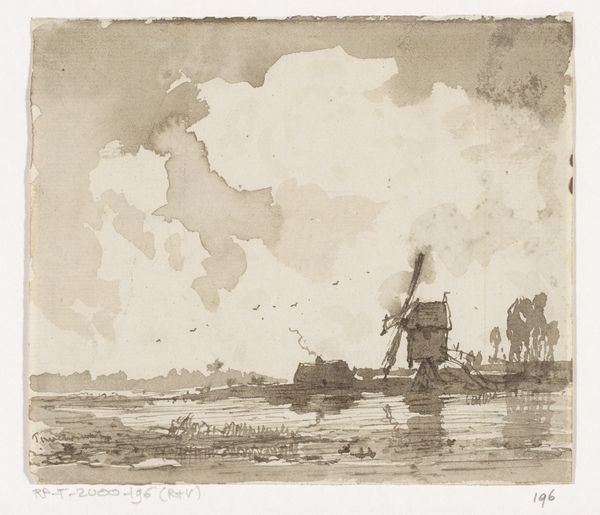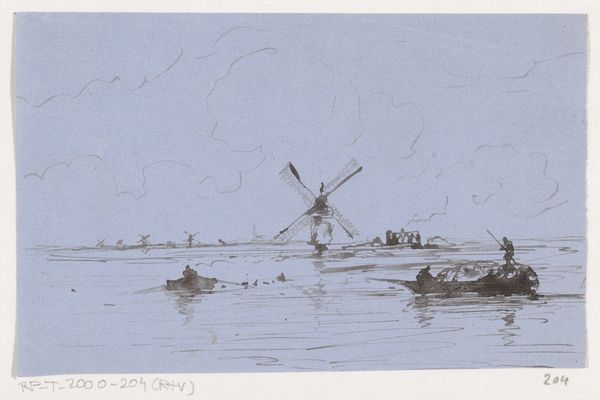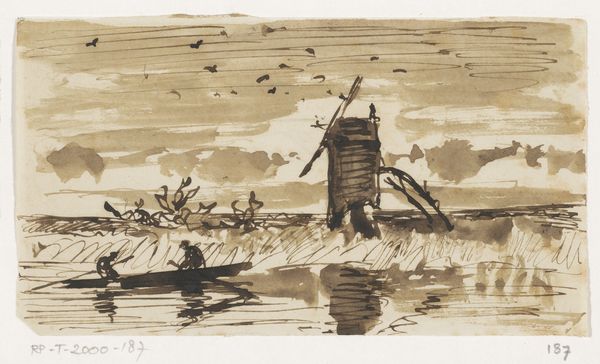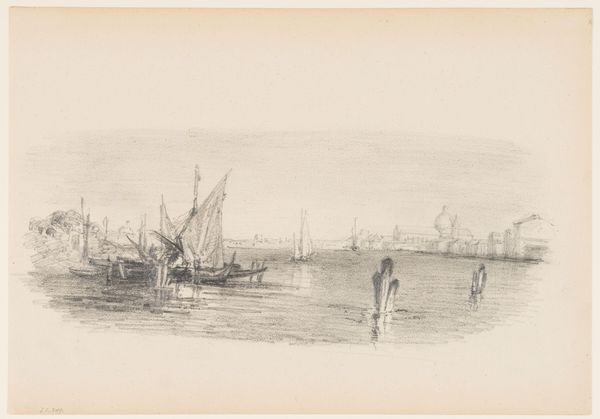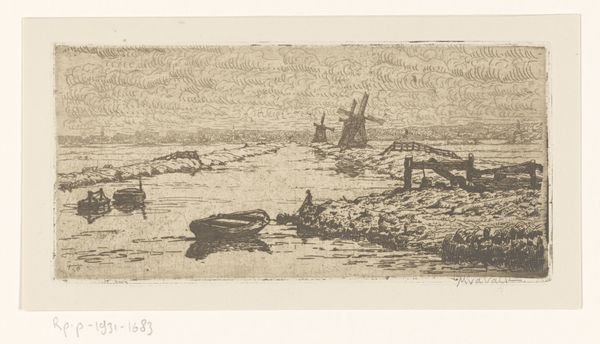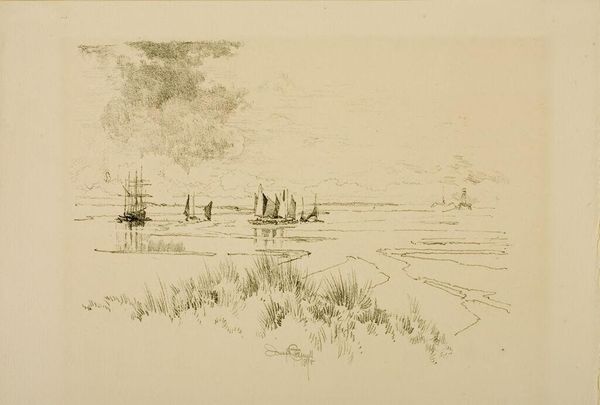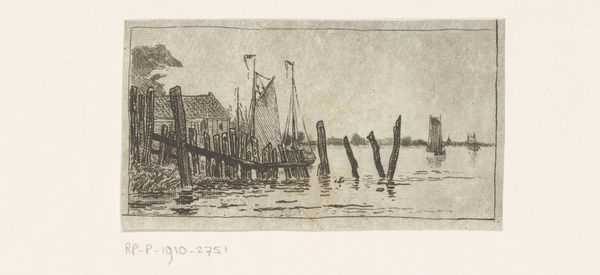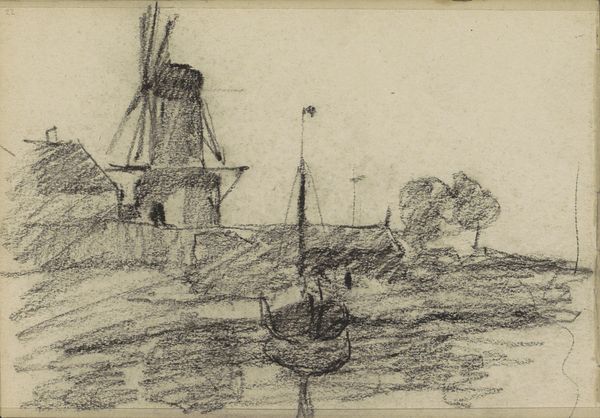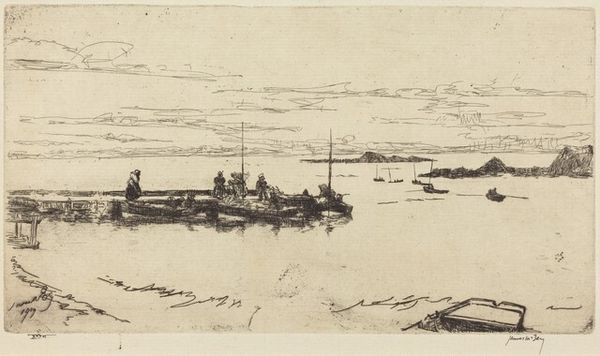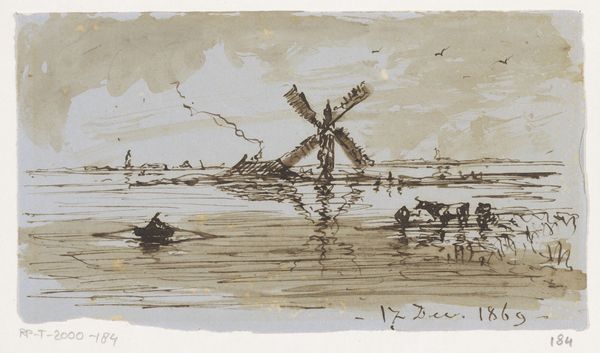
Dimensions: height 46 mm, width 131 mm
Copyright: Rijks Museum: Open Domain
Curator: Let’s turn our attention to this delicate work, "Rivierlandschap," or "River Landscape," attributed to Johannes Tavenraat, created sometime between 1840 and 1880. The artwork on display incorporates ink and watercolor to depict a serene waterscape. Editor: My first impression is one of quiet contemplation. The limited palette—various shades of brown—contributes to a very muted, almost melancholic mood. The swift, suggestive lines imply movement while paradoxically rendering the scene still. Curator: Tavenraat's historical context is important. The 19th century saw a rise in landscape painting's popularity, aligning with growing nationalism and a desire to capture regional identities. Do you see any of that playing out here? Editor: I think so. But I'm more struck by the figures within the landscape. There's the lone windmill standing centrally within the horizon. Are the various boats on the water—fishing skiffs perhaps?—meant to be working-class laborers traversing space, embodying romantic ideas of labor and nature? Curator: The depiction of laborers and industry does intersect with certain Romantic ideals, particularly the notion of humans coexisting with nature, but with a nuanced approach in the Dutch tradition. Consider the socio-economic backdrop of the time; industrialization was burgeoning. This work then prompts a conversation of how class dynamics, shaped by capital, play a part in landscape art. The way nature becomes less ‘nature’ and is affected by society itself. Editor: Fascinating point. It calls to question: Was this landscape being represented or appropriated in its visual encoding? Were Tavenraat's representations perpetuating—or perhaps questioning—certain social hierachies? The materiality, however humble in scale, asks big questions. Curator: And indeed, this understated quality provides much food for thought about how landscapes mediate and inform social narratives. This piece definitely underscores art's active role within political and economic forces, prompting viewers to acknowledge landscapes beyond simple scenic representations. Editor: Absolutely. These historical landscapes serve as rich sites for exploring critical intersectional thought and reveal many interesting facets. Curator: It has made me want to reflect further upon what role images play as part of our historical dialogue.
Comments
No comments
Be the first to comment and join the conversation on the ultimate creative platform.
